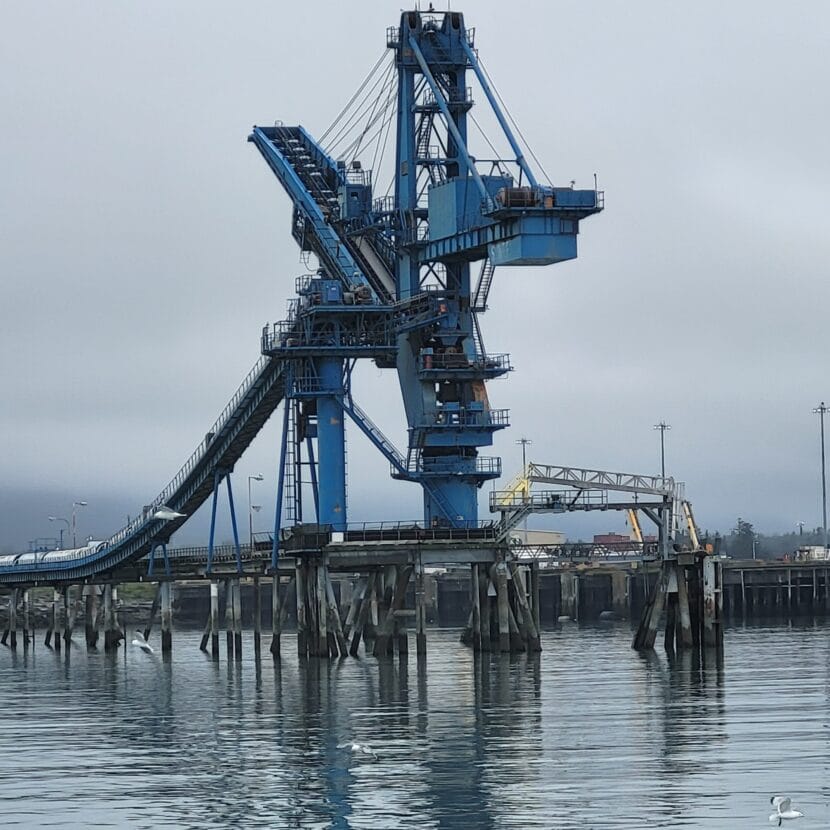For thirty years Alaska had a small coal export industry, but with demolition slated for the state’s only coal loading facility, those days are likely gone forever.
At its peak in 2011, Alaska exported 1.1 million tons — or 18 ships’ worth — of coal annually. The coal traveled down the Alaska Railroad from the Usibelli Coal Mine in Healy to the Seward Coal Terminal. There, it was loaded on boats headed for South Korea, Japan and Chile.
But within five years, coal exports had dropped 95%. In 2016, the railroad and the mine shut it down.
“There simply wasn’t the global business to justify continuing with the operation at that time,” said Meghan Clemens, a spokesperson for the state-owned Alaska Railroad Corporation, which owns the Seward loading dock.
Demand for coal never came back, a signal of the global energy transition toward lower carbon fuels. Meanwhile, the coal-loading equipment on the Seward dock has sat idle for eight years, deteriorating to the point that it is unusable.
“It’s more of a liability than anything else right now,” Clemens said.
Now the railroad has decided to demolish the coal terminal in the hopes that it can find a new use for the dock.
“With this equipment out of the way, how can we better use this dock in Seward to bring some additional business through town?” Clemens said.
Bidding on the project closed last week and Clemens said the railroad will soon select a contractor. She said the demolition budget is $1.5 million to start.
With the coal loading infrastructure gone, it’s unlikely the mine or the railroad ever reinvests in coal exports, said University of Alaska Fairbanks energy historian Philip Wight.
“It’s hard for me to see any situation where this is not the end of Alaskan coal exports,” Wight said.
Usibelli Coal Mine did not respond to a request for comment.
Coal was never a huge part of Alaska’s energy exports. But Wight said its decline is one example of changes driven by the global energy transition.
Nations have committed to reducing their contribution to global warming, which means switching to lower carbon sources of energy.
Around the world, coal has been increasingly replaced by natural gas. Wight said since the 2010’s, countries in Asia have imported more liquefied natural gas, or LNG.
“And that made a big difference in the power sector, where countries like South Korea and Japan burned a lot more LNG rather than coal for electricity generation,” he said.
Natural gas releases less carbon into the atmosphere than coal when it’s burned, which has led it to be seen as a cleaner option. But it’s still a fossil fuel, and new research has raised questions about whether it has a lower climate impact than coal.
Despite that, demand for natural gas is growing. Wight said that’s in part because it works well as a backup to renewable energy sources like wind and solar.
“We’re looking at a transition where LNG is going to continue to play a large role in that regardless of its carbon emissions.”
Even if the state likely won’t be exporting any more coal, it still remains a major energy source inside Alaska. In 2020, a third of electricity generated in the Interior came from coal, according to the Alaska Resource Development Council.
But coal infrastructure in Alaska is aging. And local utilities are eying other options — including wind energy and natural gas.






